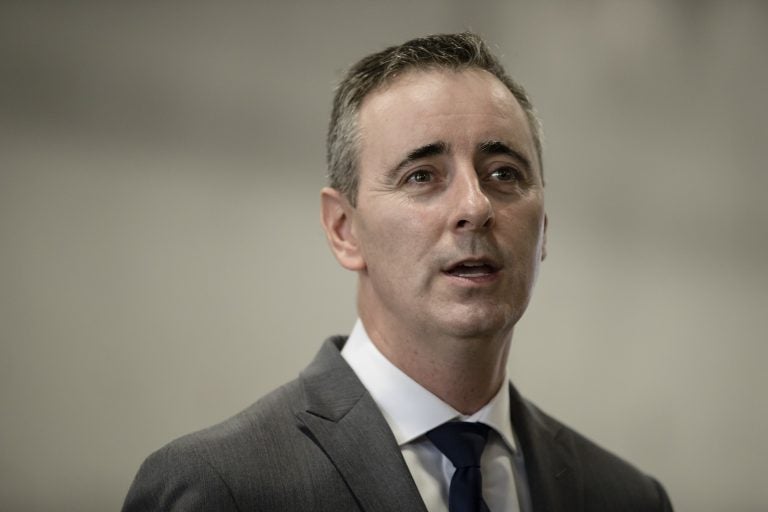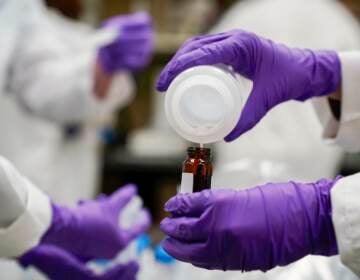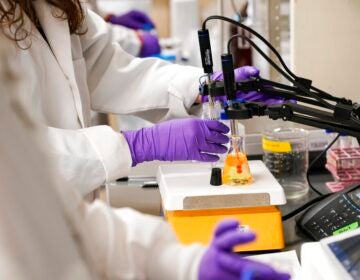Bucks County congressman seeks allies in water contamination battle
Suburban Philadelphia U.S. Rep. Brian Fitzpatrick plans a national caucus to fight water contamination from nearby military bases.

Rep. Brian Fitzpatrick, R-Pa., speaks during a campaign event at the Load Rite Trailers manufacturing facility in Fairless Hills, Pa., Monday, Sept. 17, 2018. (AP Photo/Matt Rourke)
The threat of groundwater contamination from two former military bases appears to be spreading, and Bucks County U.S. Rep. Brian Fitzpatrick wants to build a national coalition within Congress to confront the issue.
The contamination is from chemicals called per- and polyfluoroalkyls, also known as PFAS, found in firefighting foam used at the Willow Grove Naval Air Station in Horsham and the Naval Air Warfare Center in Warminster, both now closed. However, researchers say the potential health effects of drinking the contaminated water are unclear.
Fitzpatrick said in a phone interview that communities near military bases around the country are facing the same problem, so he’s assembling a caucus of representatives to work together on the issue.
“I think the caucus will bring strength in numbers,” Fitzpatrick said. “Rather than us individually fighting in individual districts, we can have potentially a force-multiplier effect where we all come together.”
Residents in Horsham, Warminster and Warrington learned of the contamination in 2014.
The Philadelphia Inquirer recently reported that at least 22 other towns have water with at least some contamination from the chemicals.
Fitzpatrick said it’s been hard to get clear answers from the U.S. Department of Defense.
“There’s essentially a lot of finger-pointing going on between the branches of the military, between DOD and EPA on where liability exists,” he said. “Everybody knows there’s clearly liability here. These residents did nothing wrong. They purchased properties in these areas and now they’re being subject to contaminated water.”
There’s no clear remediation plan yet or even an agreement on the standards for how much of the chemical poses a risk in drinking water.
WHYY is your source for fact-based, in-depth journalism and information. As a nonprofit organization, we rely on financial support from readers like you. Please give today.





